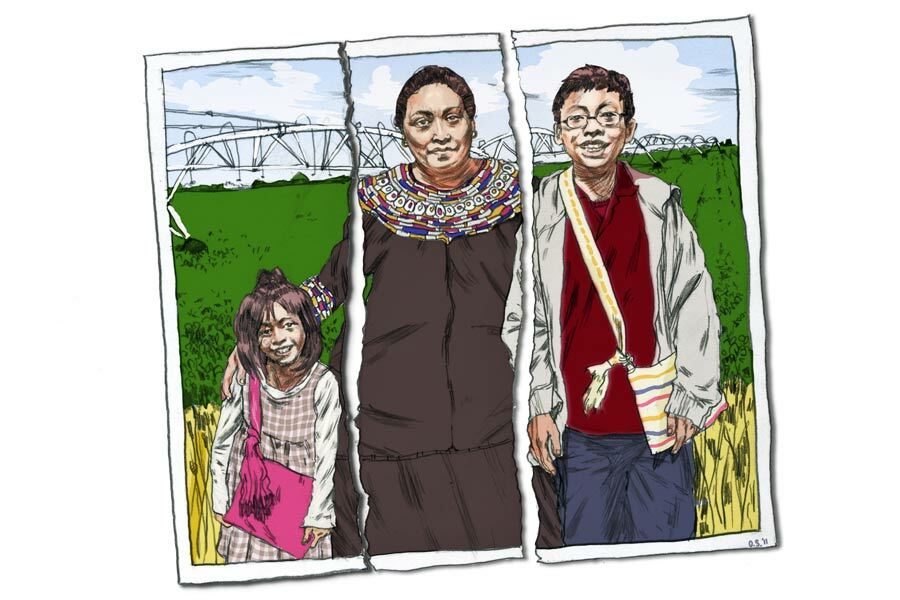Locking Up Immigrant Kids, Again
Our nation’s past treatment of immigrant families doesn’t make the current situation any less horrifying—but we need it to inform our longterm pressure on the Democrats.
Jessica Stites

In These Times readers know that kids have long been among the victims of our cruel immigration system.
In the January 2012 cover story “Torn Apart,” Aaron Nelson reported on Guatemalan immigrant Maria Luis’ five-year separation from her two children. When Immigration and Customs Enforcement (ICE) deported Maria in 2005, Nebraska’s Department of Health and Human Services held her 1-year-old daughter and 7-year-old son in “protective custody.” That was in the early days of ICE, founded in 2003 under President George W. Bush. But Nelson also reported that, in 2011, under President Barack Obama, a record 46,000 parents of U.S. citizen children had been deported.
That escalation, which earned Obama the nickname “deporter in chief,” was part of his centrist compromise strategy: Appease the Right with a deportation crackdown on “bad immigrants” — although many with no criminal convictions were swept up — and hope Republicans will help pass bipartisan immigration reform (they didn’t). The expansion of family detention was another triangulation strategy. The Obama administration wanted to handle the so-called crisis of unaccompanied Central American children showing up at the border in 2014, without simply letting them in as refugees and risking the wrath of the Right. So the administration expanded family detention thirtyfold, lengthened wait times for hearings and imposed stricter asylum criteria.
In “Locking Up Immigrant Kids,” August 2015, John Washington reported for In These Times from inside one of these detention centers, the South Texas Family Residential Center in Dilley, Texas:
Many of the kids have trouble sleeping, and three of the women I spoke with reported that their children were depressed and not eating. One told me that her 11-year-old boy lost more than 10 pounds since coming to Dilley. “We are creating a mental health crisis,” [attorney Brian] Hoffman says. “These kids are going to have PTSD and need serious therapy.”
The long waits and tense conditions take their toll on the women, too. Despite the nearly roundthe-clock efforts of CARA’s legal team [a pro bono legal collective serving detained families], some women in Dilley lose their chance at legal status in the United States because they can no longer suffer being locked up. I spoke with one woman who had been in Dilley five months and, unable to handle it anymore, decided to be deported. The conditions at another family detention center, in Karnes, Texas, drove a 19-year-old woman to cut her wrists on June 4. She had a 4-year-old son with her and wrote in a suicide note that the detention center was “killing me little by little” and that she was “treated worse than an animal.” She survived and, four days later, was deported to Honduras.
Another woman said that she was humiliated when a Dilley guard immediately washed his hand after her toddler daughter touched it. “They think we have diseases,” she told me, breaking into sobs.
One girl I met begged her mother to agree to deportation because she didn’t want to have her ninth birthday in prison. What she wanted was ice cream, which is not available inside Dilley. Another girl, having been held for the past 10 months in family detention centers in Artesia, Karnes and now Dilley, included an ICE officer in a picture she drew of her family.
Human rights lawyers successfully sued to have the centers shut down, citing the 1997 Flores precedent that children cannot be imprisoned except as a last resort.
While Obama frustrated activists, he was susceptible to pressure. President Donald Trump plays by a different set of rules: He has taken every opportunity to edge toward ethnic cleansing, with measures from banning travel from seven Muslim-majority countries to rescinding the protected status of 300,000 U.S. residents. The same alliance of legal and migrant groups that moved Obama to issue pro-immigrant executive orders is swatting down Trump’s wild, impulsive overreaches, but it can’t hold the line forever, as revealed by the Supreme Court’s June 25 ruling to uphold the Muslim ban.
The Left, led by migrant groups like Mijente and the National Domestic Workers Alliance, has not splintered or quibbled over which president was worse, but built alliances with liberal groups like MoveOn and the Women’s March, and turned out in enormous numbers. Hundreds went to the border for Father’s Day. Portland occupiers shut down an ICE facility. Democratic Socialists of America members disrupted Homeland Security Secretary Kirsten Shjeland’s dinner at a Mexican restaurant.
And the activism quickly won a partial victory: Trump nominally rescinded the policy June 20, announcing the resumption of family detention in its place.
But progressives were not appeased. Without missing a beat, leftist and liberal organizations pivoted to condemn family detention. As In These Times web editor Sarah Lazare wrote, “Movements should not set a bar so low that they allow for the continued jailing of children.” The marches kept growing.
We’re at a tricky point of needing to operate in two time scales at once: the immediate need to halt Trump atrocities, and the long-term need to lay the groundwork for real change when — or if — the Democrats retake power.
For now, the Left is proving it can deftly pursue both. As this issue went to press, mass marches continued and leftist Democratic challengers were staking out an anti-ICE stance. In late June, a long-shot democratic socialist candidate in New York’s 14th Congressional District primary plastered Queens and the Bronx with posters reading “Abolish ICE/Elimina ICE.” The Chicago Tribune described the race as “a highprofile electoral test” of the anti-ICE campaign. On June 26, the candidate, Alexandria Ocasio-Cortez, defeated 10-term incumbent Joe Crowley, 57 percent to 43 percent.
Jessica Stites is Editor-at-large for In These Times.









